apparatuur voor het brouwen van kombucha is een gefermenteerde theedrank die ongelooflijk populair is geworden dankzij de pittige smaak en potentiële gezondheidsvoordelen. Thuis kombucha brouwen vereist gespecialiseerde apparatuur om het fermentatieproces goed te kunnen controleren. Deze gids geeft een overzicht van de essentiële kombucha-instrumenten die je van begin tot eind nodig hebt.
Kombucha-brouwapparatuur Soorten
De belangrijkste soorten kombucha-apparatuur zijn onder meer:
| Uitrusting | Functie |
|---|---|
| Brouwcontainer | Fermentatievat om kombuchacultuur in te huisvesten |
| Luchtsluis | Zorgt ervoor dat gas kan ontsnappen terwijl de buitenlucht buiten wordt gehouden |
| Kraan | Geeft afgewerkte kombucha af uit de vergister |
| Thermometer | Bewaakt de fermentatietemperatuur |
| Flessen | Slaat met smaak doordrenkte 2F-kombucha op |
| Overhevelen | Brengt 1F kombucha over naar flessen voor 2F |
Behoeften aan kombucha-brouwprocesapparatuur
Kombucha-fermentatie omvat twee stappen, die elk bepaalde uitrusting vereisen:
1F – Eerste gisting
De eerste gisting levert de rauwe kombucha op. Er is apparatuur nodig om:
- Zet en steile thee
- Meng suiker
- Huis SCOBY in zoete thee voor primaire gisting
- Beheers de blootstelling aan lucht
- Houd de temperatuur in de gaten
Een brouwcontainer met open bovenkant, luchtsluis, thermometer en SCOBY-cultuur zijn minimaal vereist.
2F – Tweede gisting
De tweede gisting is voor smaak en koolzuur nadat 1F is voltooid. Om kombucha te bottelen:
- Sifon afgewerkt 1F kombucha
- Meng er vruchtensap, kruiden of andere smaakstoffen door
- Bewaar flessen luchtdicht gedurende 2-3 dagen
Flessen, sifons en ingrediënten om smaken toe te voegen zijn in deze fase noodzakelijk.
Grootte en capaciteit van de kombuchavergister
| Fermentor grootte | Brouwcapaciteit |
|---|---|
| 3 gallons | Kan 12 flessen van 16 oz per batch van 1F opleveren |
| 5 gallons | Kan 48 flessen van 16 oz per batch van 1F opleveren |
| 7 gallons | Kan 84 flessen van 16 oz per batch van 1F opleveren |
De opbrengsten zullen variëren op basis van fermentatiefactoren
Houd bij het dimensioneren van een fermentatievat rekening met het volgende:
- Gewenste hoeveelheid kombucha
- Beschikbare brouwruimte
- Aantal SCOBY-culturen
Grotere batches hebben meer SCOBY-oppervlakte nodig voor een succesvolle fermentatie.
Aanpasbaar Kombucha-installatieontwerp en lay-out
Kombucha-brouwsystemen kunnen worden aangepast door:
- Aantal vergisters
- Hulpstukken zoals tappen
- Vorm – cilindrisch of vierkant
- Tapsysteem voor bottelen
Meertrapsopstellingen maken ononderbroken brouwcycli mogelijk door 1F en 2F in verschillende containers te spreiden.
Houd bij het ontwerpen van een indeling rekening met reinigingsgemak, afvoer en ergonomie. Plaats deze voor uw gemak in de buurt van de watertoevoer en -afvoer.
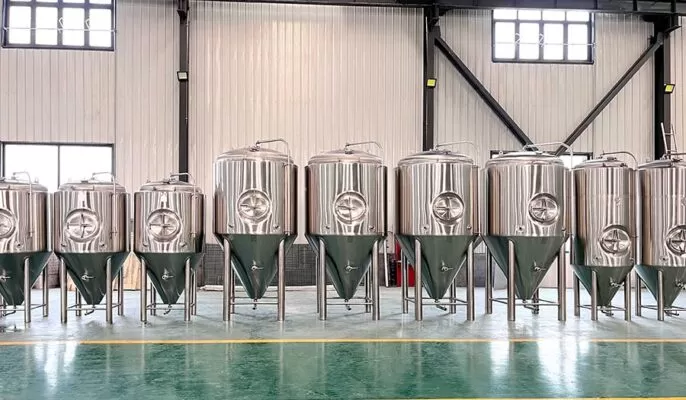
Waar te kopen Kombucha-brouwapparatuur
Starter Kits: A Springboard for Beginners
For brewing novices, starter kits provide a convenient launchpad. These kits typically include essential equipment like glass jars, SCOBY (Symbiotic Culture of Bacteria and Yeast), organic sugar, tea, and brewing instructions. Popular options include The Kombucha Shop’s Starter Kit or the Deluxe Kombucha Brewing Kit, both well-equipped and beginner-friendly.
Beyond the Basics: Building Your Brewing Arsenal
As you gain confidence, explore individual components to customize your setup. Opt for larger brewing vessels like a 2-gallon glass jar for bigger batches. Invest in a hydrometer to track sugar content and fermentation progress. For continuous brewing, a spigot-equipped container simplifies the process. Don’t forget funnels, cheesecloth, and swing-top bottles for bottling your kombucha creations.
Online Retailers: A World of Kombucha Supplies
The internet is your oyster when it comes to kombucha brewing supplies. Online retailers like Amazon, Northern Brewer, and Homebrew Shop carry a vast array of equipment, SCOBYs, and flavorings. Explore their virtual shelves for brewing jars, funnels, hydrometers, and other essentials. Look out for kombucha-specific websites like The Kombucha Shop or Kombucha Kamp, offering dedicated kits and brewing resources.
Local Homebrew Stores: Hands-on Help and Community
Don’t underestimate the power of your local homebrew store. These havens for fermentation enthusiasts often stock kombucha supplies alongside beer and wine brewing equipment. The knowledgeable staff can answer your questions, offer recommendations, and guide you through the brewing process. Additionally, many stores host workshops and demonstrations, fostering a sense of community and shared passion.
Specialty Stores: Catering to Niche Preferences
For specific needs or unique preferences, explore specialty stores. Health food stores may carry organic SCOBYs, teas, and sugars suitable for kombucha brewing. Local tea shops might offer loose-leaf blends specifically geared towards kombucha enthusiasts. Don’t be afraid to ask around – you never know what hidden gems you might discover!
Installatie en bediening van het Kombucha-systeem
| Taak | Hoe | Tips |
|---|---|---|
| Opgericht | Reinig en ontsmet alle apparatuur; monteer luchtsluizen en tappen volgens de instructies | Zorg ervoor dat de afdichtingen luchtdicht zijn |
| Brouwen | Zet de thee, voeg suiker toe, giet in de vergister en bedek met SCOBY/startthee volgens recept | Gebruik vers gekookte en gekoelde thee |
| Gisting | Bewaar 1F batch ongeveer 75°F uit zonlicht gedurende 7-30 dagen totdat de zuurgraad het gewenste niveau bereikt | Handhaaf een constante, geschikte temperatuur |
| Bottelen | Hevel kombucha voorzichtig over en vermijd de inname van gistbezinksel | Breng geen zuurstof in door te spatten |
| Smaakstof (2F) | Voeg sap, kruiden enz. toe zodra de eerste gisting voltooid is; laat 2-3 dagen staan | Gebruik vers bereid fruit/smaken |
| Opslag | Bewaar afgewerkte kombucha in de koelkast; composteer extra SCOBY's | Houd de blootstelling aan lucht minimaal |
| Opruimen | Was alle apparatuur na gebruik met niet-antibacteriële zeep | Grondig drogen om schimmel te voorkomen |
Volg de brouwprincipes en voedselveiligheidsrichtlijnen voor de beste resultaten.
Evaluatiecriteria voor leveranciers van Kombucha Brewer
Wanneer u een leverancier van kombucha-apparatuur selecteert, vergelijk dan op:
| Criteria | Evaluatiebegeleiding |
|---|---|
| Materialen | Bij voorkeur roestvrij staal van medische kwaliteit |
| Bouw | Lekvrije afdichtingen, duurzame verbindingen |
| Kenmerken | Opties voor grootte/capaciteit beschikbaar |
| Makkelijk te gebruiken | Eenvoudige installatie, reiniging, bottelen |
| Prijs | Breng betaalbaarheid in evenwicht met functionaliteit |
| Productaanbod | Biedt verschillende vergisters, accessoires |
| Service | Responsiviteit als er zich problemen voordoen |
| Recensies | Positieve feedback van klanten |
| Certificeringen | Voldoet aan de productienormen voor voedingsmiddelen en dranken |
Geef prioriteit aan lekdichtheid, roestvrijstalen onderdelen, gladde oppervlakken en accessoires zoals tappen. Houd de prijs in evenwicht met de levensduur: duurder betekent vaak hogere prestaties en een langere levensduur.
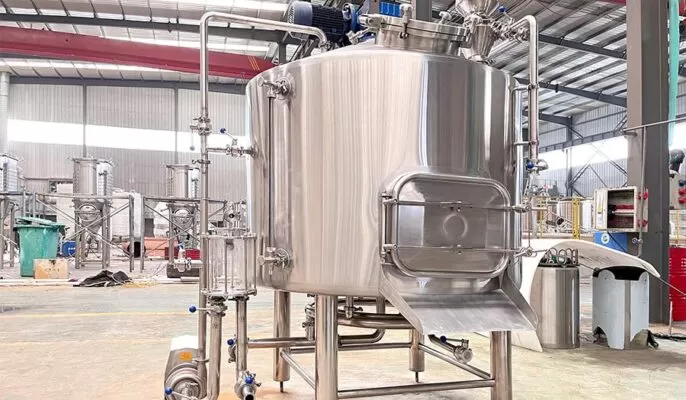
Pros and Cons of Kombucha Brewing Equipment
Pros of Kombucha Equipment
Consistency is Key: Mastering the Art of Brew
Imagine this: you’ve concocted the perfect kombucha recipe, your first sip is a symphony of flavor, but subsequent batches fall flat. Enter dedicated equipment. Using the right tools, like brewing jars with spigots, allows for repeatable, controlled fermentation. Gone are the days of messy siphoning and inconsistent results. Each batch becomes a testament to your skill, not haphazard chance.
Beyond Bubbles: Unlocking Flavor’s Full Potential
Think kombucha is just sweet and tangy? Think again! With the right equipment, you become a flavor alchemist. Invest in a hydrometer to precisely control sugar levels, leading to perfectly carbonated batches or drier, kombucha-vinegar style creations. Experiment with different teas, fruits, and herbs, knowing your equipment can handle even the most spirited fermentations.
Efficiency Meets Sustainability: Brewing Smarter, Not Harder
Let’s face it, continuous brewing with makeshift mason jars can be cumbersome. But dedicate a continuous brewing system with a spigot, and kombucha flows effortlessly. Less cleaning, less waste, and a steady stream of your favorite bubbly – what’s not to love? Plus, reusable bottles and swing-top lids eliminate single-use plastics, making your kombucha habit an eco-conscious one.
Safety First: Peace of Mind in Every Sip
When it comes to fermentation, hygiene is paramount. Food-grade glass jars, stainless steel funnels, and proper sanitation tools ensure contamination risks are minimized. Peace of mind comes with knowing your equipment is designed for safe and healthy kombucha brewing.
The Joy of Craft: Brewing Becomes a Ritual
Forget the supermarket aisles. Owning your kombucha journey starts with owning your equipment. The act of measuring, brewing, and bottling becomes a mindful ritual, connecting you to the magic of fermentation. And when you raise a glass to your own creation, the satisfaction is unparalleled.
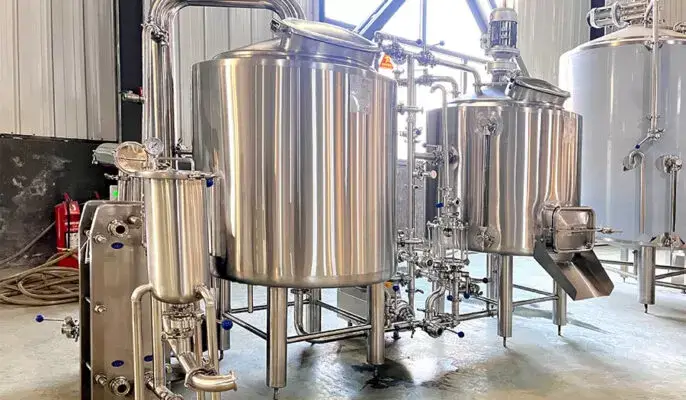
cons of Kombucha Equipment
While brewing your own kombucha can be a rewarding and delicious adventure, it’s crucial to approach it with informed eyes. Beyond the enticing benefits of dedicated equipment lie potential drawbacks that warrant consideration. Let’s explore the other side of the bubbly coin and examine the cons of investing in kombucha brewing tools.
The Cost Conundrum: Brewing on a Budget
Let’s be honest, kombucha kits and individual equipment add up. From brewing vessels to hydrometers, the initial investment can seem daunting, especially for budget-conscious beginners. Consider carefully if your kombucha habit justifies the upfront cost, or if starting with simple mason jars and readily available ingredients might be a wiser first step.
Space Invaders: Finding Room for Fermentation Frenzy
Kombucha brewing can quickly take over your countertop or pantry. Large brewing vessels, bottles, and equipment require dedicated space, which might be scarce in smaller kitchens. Assess your available storage before diving in, or opt for space-saving solutions like continuous brewing systems.
The Learning Curve: From Novice to Ninja (Eventually)
Mastering kombucha takes time and practice. While equipment simplifies procedures, it doesn’t eliminate the learning curve. Be prepared for trial and error, potential contamination mishaps, and the patience required to hone your brewing skills. Don’t be discouraged by initial hiccups; view them as stepping stones to becoming a kombucha ninja!
Cleaning Conundrum: Maintaining the Sparkly Standard
Maintaining sterile equipment adds another layer of responsibility to your kombucha journey. Regular cleaning and sanitation are crucial to prevent contamination, but they can also feel like a chore. Evaluate your commitment to thorough hygiene before investing in equipment, as neglecting this aspect can compromise the safety and quality of your brews.
The Allure of Simplicity: Sometimes, Mason Jars Suffice
For casual kombucha enthusiasts, the allure of simplicity shouldn’t be underestimated. Starting with basic equipment like mason jars and readily available ingredients allows you to experiment and enjoy the process without significant financial or space commitment. Remember, delicious kombucha doesn’t always require fancy tools.
FAQ
What are the absolute necessities for brewing kombucha?
The minimum needed is a fermentation vessel, SCOBY, starter liquid, tea, sugar, and a cloth cover. Acids from the culture and tea prevent outside contamination. Other equipment can optimize the process.
Which material is best for fermentation vessels?
Stainless steel, glass and food-safe plastic all work. Stainless offers the most durability and ease of cleaning over repeated uses. Glass is impervious but less durable. Food-grade plastic is affordable but can scratch over time.
Should I get a kit or buy pieces separately?
Kits simplify getting started with validated equipment combos versus assembling piecemeal. As experience grows, customize with preferred fermenter types, flavors, etc. Some kits even provide the SCOBY.
How many fermentation vessels should I have?
At minimum, one fermenter and bottles for 2F are needed. Using separate primary and secondary fermenters lets batches continually cycle. Additional vessels let you experiment with flavor combinations.
What temperature is best for kombucha fermentation?
The ideal range is 75-85°F. Temperatures below 70°F slow fermentation. Above 86°F risks contamination. Maintain a stable temperature for consistent results.
Meer weten over brouwapparatuur




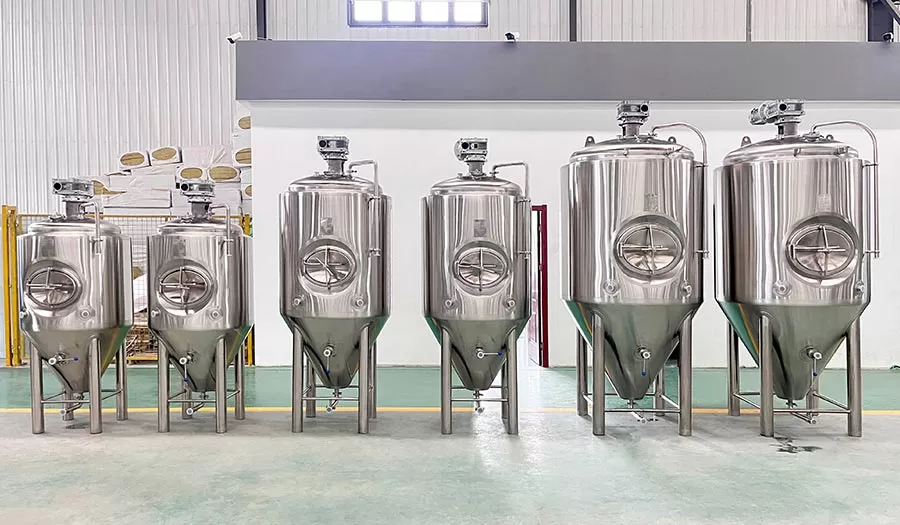
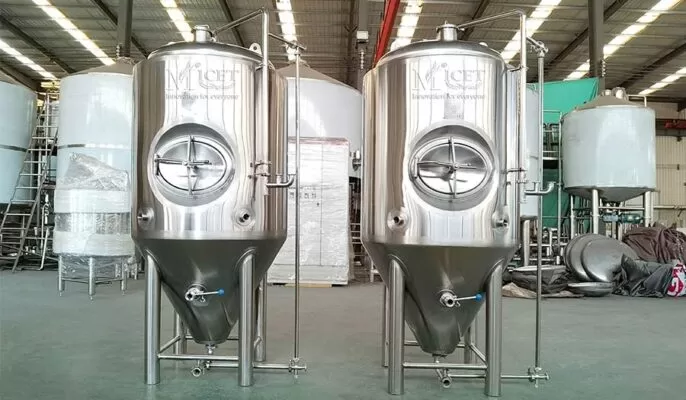
I really liқе it when folks get together and share ideas.
Great website, stick with it!